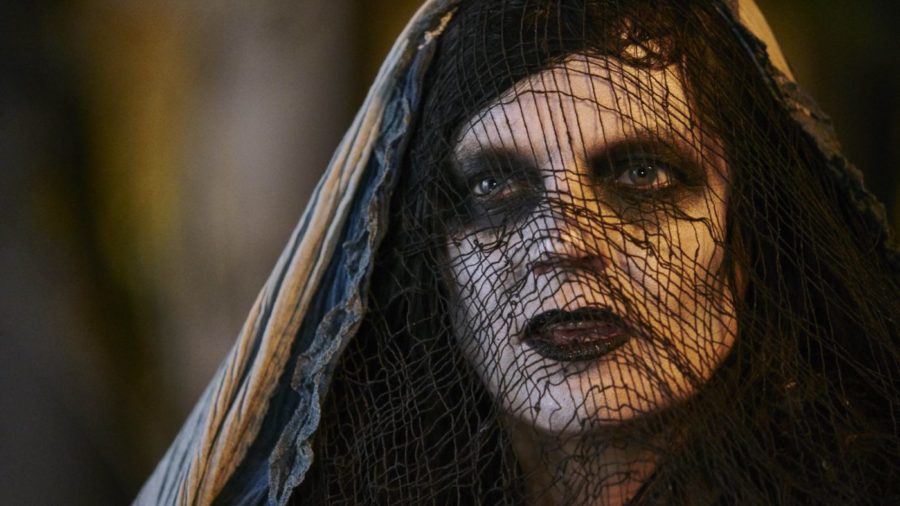
Harvesting Boys in the Trees
Someone please explain to me when did “20th Century Period Pieces” become a genre?
Let me back up… My husband wanted to watch the 2016 Australian film Boys in the Trees, written and directed by Nicholas Verso. According to Netflix, it’s a suspenseful, dark action/adventure film. My husband thought it would be a good addition to the review series our teen daughter and I have been doing for Billy Crash.
While the movie takes place on Halloween and explores death and the veil between worlds, the film shouldn’t even remotely could be considered horror, though IMDb seems to disagree with me. In portions, my fourteen-year-old daughter was spooked and often referred to Boys in the Trees as creepy. In some parts, she laughed and in others she cried. She says the entire premise was “neat.”
Friendship Gone Wrong
The story unfolds as a tale of friendship gone wrong, coupled with ghost stories that all touch on the magic of childhood and dreams. Corey, as played by Toby Wallace, is the central character in the film. He is an aspiring photographer about to graduate from high school. Within the opening scene, the audience sees Corey’s friends attack another boy, Jonah (Gulliver McGrath), at the skate park. When Jonah runs in fear with a bloody nose, Corey follows and we soon learn that Corey and Jonah were once close friends before Corey joined the cool kids. Much of the film builds to the incident that drove Corey and Jonah apart, leading Corey to a place of acceptance with his peers while Jonah deals with exclusion and rejection.
I was bored through much of the first part of Boys in the Trees (I distracted myself with nail polish), but that changed toward the end. By the time I got my nails painted, the action picked up. I immediately noticed the use of the 1990s. The main character takes pictures with a print camera and develops the photographs in a dark room at home, they watch movies on a VCR, their printer is gigantic, and the use of Wifi and a payphone is almost funny.
Stories in the Trees
My daughter Eva and I both liked the structure of the film as a series of “ghost stories” and snippets of “real life,” but Eva was the first to say she would have liked to see the ghost stories fleshed out and used more, and I agree. With these series of stories in Boys in the Trees, Jonah forces Corey to revisit when they were friends and also the cost of letting go of childhood magic.
One story – the boy who promised to explore his dreams – was clearly connected to the end. It also served as one of the main themes of the film. While the popular kids have a party, Jonah and Corey explore town. The story of the boy who promised to explore his dreams connected to a house that scared them when they were younger. Jonah tells the story as a mastery over darkness, that protagonist in his story ruled over the forest and the dark as a child. He promised to explore every shadow but grew afraid as he aged, and therefore lost his control.
Jonah believes that growing up automatically means giving up on dreams.
Themes Amongst the Trees
Boys in the Trees covers a lot of good ground for teens: the meaning of genuine friendship, the price of popularity, bullying, and the trauma caused by bullying. The boys spend some time discussing the people they know that have died and ponder death. They have both experienced loss— Jonah’s mother has passed as has Corey’s dog. My daughter tells me that the main theme of the film is not to break promises or bad things will happen to the people you love. She also discussed bullying, what she has seen in her school, and the depression bullying causes (because after all, we have seen 13 Reasons Why), but she hasn’t touched on the true trauma experienced by both main characters and how it changes them.
So I push her. We talk about the flashback of the bullying scene that drove Jonah and Corey apart and the choice that Corey made, essentially deserting Jonah. She says she’s not sure what happened, but some of the incident had sexual overtones and becomes the origin for why the popular boys nickname Jonah “fag.” When Jonah and Corey were younger, they met two boys who started to molest them, and Corey ran, leaving Jonah alone to bear the brunt of the attack. This led to the end of their closeness. And the end of the film reveals that Jonah had committed suicide after his run-in at the skate park, which Corey doesn’t learn until the police question him.
Awards and Post-tree Life
Boys in the Trees (written by Nicholas Verso) has won several awards: winner of the Austin Film Festival (2016), best narrative unproduced screenplay according to the New York Lesbian and Gay Film Festival (2011) and best cinematographer from the Newport Beach Film Festival (2017). The cinematographer was Marden Dean and Verso also did the film editing. My daughter commented that she loved the cinematography without knowing it won an award. The film has several other nominations, many in Australian film events.
Eva would like to watch the film again and honestly so would I because the ending may have been more constructed than I realize. Eva never realized until toward the end that Jonah had committed suicide, even with me dropping hints once I was certain halfway through the film. The film appears to be a sequel to 2014’s The Last Time I Saw Richard, which might help shed some light on some of my questions. That film does not seem as readily available.
The Plot Sickens: Find The Lost Boys with Angel Ackerman!
Crash Analysis Support Team
Angel Ackerman

Angel Ackerman and Eva Parry
After a fifteen-year career in print journalism, Angel Ackerman has studied world history, (specifically post-colonial Francophone Africa, Muslim relations, and contemporary Western politics) and traveled several continents. Her recent publications include the poem This Paris in StepAway magazine, an essay on the weather and travel on the Horn of Africa in Rum Punch Press, academic encyclopedia entries on Djibouti, a review in Global Studies South on a book examining famine in Somalia, book reviews from eons ago for Hippocampus Magazine and an upcoming essay on chickens. Follow her on Twitter.
Eva Parry will enter high school this fall but has already spent a season in the low brass section of the marching band carrying a sousaphone. When not irritating her mother by piling as many clothes and candy wrappers as possible on her bedroom floor, she explores various writing forms and antagonizes her cats. She has known Billy Crash most of her life and never stops making noise or talking, which once resulted in her missing a catch and taking a Frisbee in the mouth.
(Still photo from Boys in the Trees via Nightmare on Film Street.)
Get your Crash Palace and The Last Knock gear!
THE LAST KNOCK horror podcast is a Crash Palace Productions’ featured show. Besides this site, you can find THE LAST KNOCK on iTunes with new shows posted every other Sunday at 9 PM ET.
Crash Palace Productions website design and creation from Brian Yount Digital Enterprises with banner and THE LAST KNOCK advertising art from Palko Designs. THE LAST KNOCK logo from Paul Belci.
(Death Comes Twice photo from Black Void Studios.)

